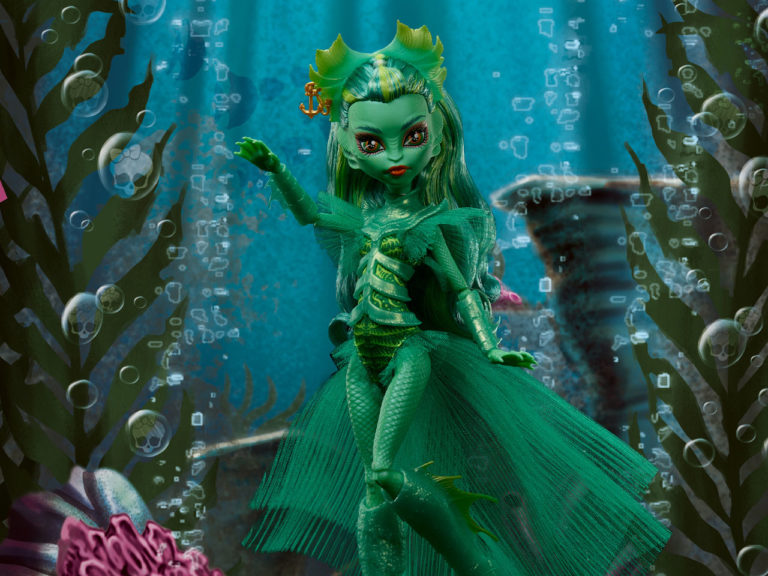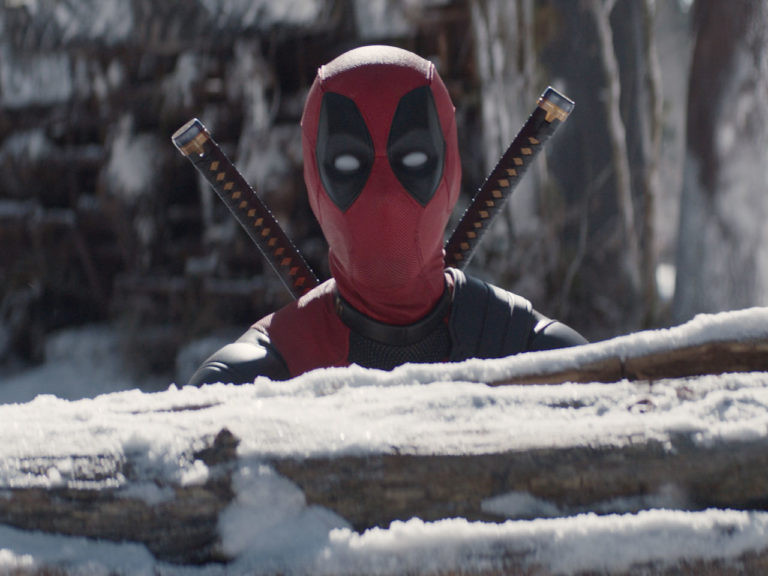

The Dark Knights of the Dark Multiverse have brought Dark Times to the Justice League! From nightmare worlds that should never have existed, this League of Extraordinary Evil (Lady and) Gentlemen wields powers that the League can’t beat. So how can the League possibly beat them? The answer lies in Justice League #32, as “Bats Out of Hell” continues!
The Dork Knights of the Dork Multiverse
Okay, okay, I kid, I kid. Justice League #32 is the best book to have “Justice League” written on it in quite some time. That’s not necessarily saying much, because the title has been incredibly disappointing, but this issue isn’t terrible. I don’t love it, but my lack of enthusiasm can be largely attributed to the larger Metal goings on rather than to what’s actually happening here. It has its own flaws, too, but all-in-all, it reads okay, the artwork is distinct and functional, and I didn’t want to start a fire with it when I was done. That’s already three points of improvement over the last run.
A voice for Victor Stone
Cyborg is one of my favorite characters, and I’m not even totally sure why. Maybe I’ve watched too much Teen Titans Go! Maybe I think he looks cool. I’m not really sure. At a conceptual level, I love the man-machine dichotomy, but it’s something that most writers stay away from, to their detriment. They treat Victor like a device—a token tech guy who handles digital threats and little else. David Walker had good intentions at the start of his short run on Cyborg, but even he ultimately pit young Mr. Stone against villains called “Technosapiens.”
I give Venditti credit for making Cyborg the narrator of Justice League #32, but even more for not making him all techno-dingus. I have complaints about the narration, too, but the fact that Venditti seems to understand that Victor is more than hardware and software earns him a lot of goodwill from me.

It’s also nice to see Liam Sharp—whose beautifully peculiar aesthetic helped successfully rebirth Wonder Woman—handling the line work. This issue and the next may be Metal tie-ins, but they weren’t originally solicited that way. I was expecting fill-in creative teams, and the sort of quality one expects from such scenarios. To have a rock star like Sharp bring his dramatic lines and breakdowns to this book is a most welcome treat. He delivers massive perspective when the scene calls for it, but he’s just as comfortable working the close, human moments that wind towards the conclusion. And while I still prefer Sharp’s Wonder Woman colorist Laura Martin, Adam Brown does excellent work here. Just look at the detail in the spread above. Stunning.

The words are the problem
The problem with this book is that, for all of its aspirational weight, it doesn’t actually connect as well as it should. A big part of the failure rests with Venditti, who tries to make Cyborg’s entire narrative a sports metaphor—one that seems a bit confused on the first page before settling in on the importance of a team with diverse skills. I should mention again that I really appreciate the resistance to simplistic characterization for Victor; however, Venditti strains the metaphor to the point that Victor ends up coming across as someone who thinks he’s more than he is, and in the end, that’s a misuse of the character.
Shifting focus, maybe I missed it, but how did the different members of the League learn the names of their Dark Batman counterparts? Here, they each address the Dark Knights by their fancy names, and I’m pretty sure we didn’t get to see how they learned them. I just took a flip through Red Death, and it’s not in there.
Speaking of Red Death, it’s hardly Richard Starkings’s fault, but the dialogue style for the evil Bat-speedster is just plain awful. I know they’re trying to make him seem all crazy spooky, but it’s very difficult on the eyes, and it just makes me angry at editorial instead of more “tuned in” to Red Death.
Still okay
All-in-all, I still enjoyed this much more than the last few Metal one-shots, and this is a substantial upgrade for Justice League. I guess my final comment really has less to do with the quality of the book, and more to do with DC’s strategy. Ending Bryan Hitch’s run last month was a good thing for sure, and bringing in Liam Sharp for this issue is a visual upgrade, too. But with the Justice League film coming out in a few weeks, it seems to me that having this book mired in Metal tie-ins is a huge misstep. For a fan of the films curious about comics, the story is absolutely impenetrable. And if prospective readers manage to do the most obvious thing and pick up the main Metal books to learn more about it, they will likely emerge more confused. This month would have been the perfect time to feature some tales from the Justice League’s past, or really anything more accessible to new readers.
Recommended if…
- You’re collecting all six-hundred seventy-two billion, two-hundred fifty-six million, nine-hundred seventy-five thousand, sixty-four Metal books, and the thought of coming up short at six-hundred seventy-two billion, two-hundred fifty-six million, nine-hundred seventy-five thousand, sixty-three makes your eye twitch more than it did when you got to this point in this incredibly long sentence.
- You think Liam Sharp is just the tops (you’re right).
Overall
As much as I appreciate the respect shown to Victor Stone, and as much as I love seeing Liam Sharp draw a majority of the Justice League, Justice League #32 is just okay. Venditti’s central metaphor doesn’t quite work for me, and it often feels forced. Unfortunately, this makes Victor come across as someone who thinks he knows more than he actually does, which is an inversion of his character. Still, this is a major bump up from recent adventures in Justice League, so I’ll gladly take “just okay” for now.
SCORE: 7/10


